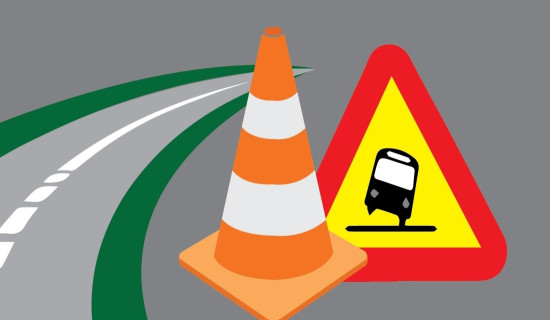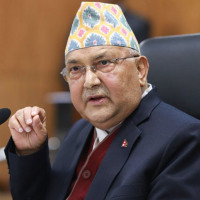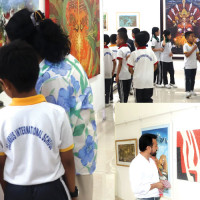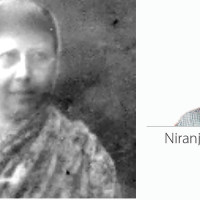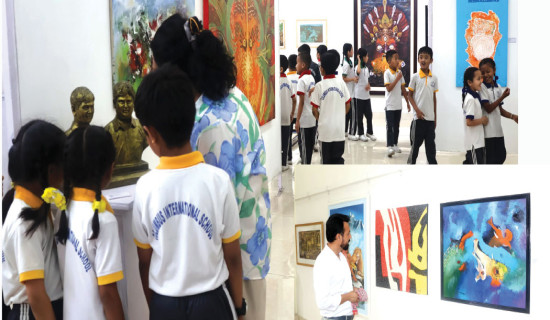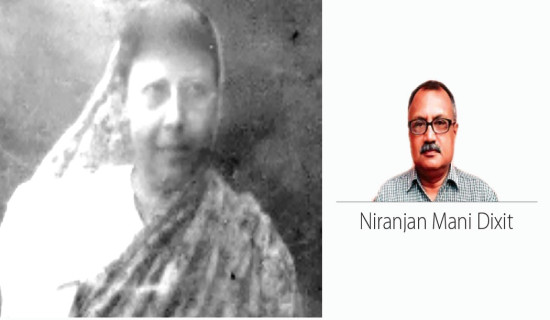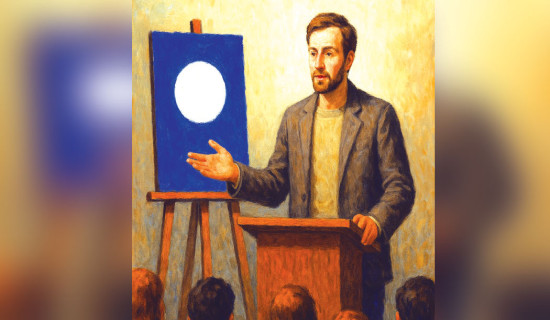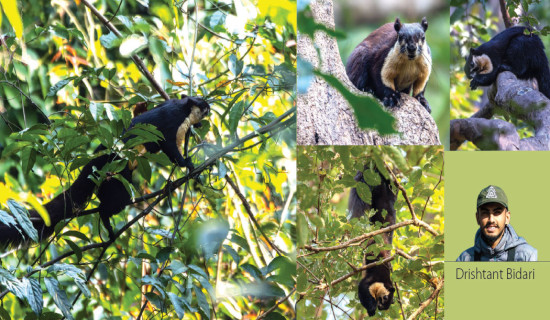- Friday, 27 June 2025
On Dashain
Khokana Celebrates Sikali Jatra
Binu Shrestha/Aashish Mishra
Dashain Ayo!
With Monday’s Ghatasthapana begins the great Nepali festival of Dashain. Marked by the worship of the nine forms of Durga and celebrated with family feasts and blessings from elders, Dashain, also referred to by names including Mohani, Navaratri, Durga Puja, Ayudh Puja and more, is a grand occasion in the national calendar celebrated by state and citizens alike – except in the medieval town of Khokana.
Located around 10 kilometres from Kathmandu, this historic Newa settlement famous for its beaten rice and mustard oil chooses to mark the Nepali autumn not with the 10-day Dashain but with the resplendent Jatra of their patron goddess Shreekali (Sikali).
What is Sikali Jatra?
Khokana does not celebrate Dashain and has not for centuries, favouring its indigenous nine-day Sikali Jatra, dedicated to Rudrayani, instead. The festival occupies the space taken up by Dashain in other places of the country and is celebrated from Ghatasthapana to Mahanawami.
On the first day, that is Ghatasthapana, eight Kumar boys get taken inside the Sikali Temple 15 minutes outside the city core to perform a secret Tantric puja. The puja is so secretive that not even birds are allowed to fly in the area when it is being performed. The boys reside in the temple for four days and only come out on the fifth day after which, the main Jatra begins.
The boys need to adhere to strict norms from Ghatasthapana to Kojagrat Purnima. They are not allowed to eat eggs, chicken and garlic, cannot drink alcohol and can only have one meal a day.
The eight also need to bathe in the Bagmati River completely naked and can only wear Daura to cover their upper body while performing the Tantric worship at Sikali.
For the first two days of their four-day stay, the boys collect votive items from the houses of the members of the Ta Guthi and Shree Khanda Sala Guthi. They then use these items for the worship of Sikali on the third day.
On the third day, the boys must offer the blood of three male buffaloes ritually sacrificed by three Guthis, Ta Guthi, Shree Khanda Guthi and Jha: Guthi, at the Sikali Temple. The animals are killed in the west of Khokana outside the gate that historically marked the city’s boundary. Only ‘pure’ buffaloes without any wounds or injuries, without a pierced nose and possessing a full set of teeth are selected for the sacrifice.
The fifth day is the main day of the Jatra when the idol of Rudrayani Devi is taken out of its temple located in the main square of Khokana and carried to the Sikali Temple in a wooden palanquin. The palanquin is placed in front of the temple along with nine copper vessels.
All the chief trustees of the three Guthis mentioned above as well as designated priests go with the Devi to perform several rituals. Additionally, they also perform an Ashvamedha Yagya that begins on the evening of the fifth day and continues into the sixth day.
On the sixth day, 14 of the 46 Devgan (god’s people) of Rudrayani dress up as Rudrayani, Indrayani, Mahalaxmi, Chamunda, Barahi, Kumari, Bhairav, Ganesh, Brahma, Mahadev, Bishnu, Hanuman, Kumar and Shakti Kumar and go around Khokana dancing. Some Devgans also walk over fire lit on the Sikali Temple premises as part of the Jatra custom.
On this day, the people leading the Guthis for the year also circumambulate the Sikali Temple with a pot of rice. This rice is then distributed to the devotees gathered to watch the ceremonies as Prasad. Consuming this Prasad is believed to cure stomach ailments.
This dance is once again performed on the seventh day Phulpati in Kwelachhi.
The festival concludes when the idol of Rudrayani is reinstated in its temple on the eighth day Maha Ashtami. After the reinstatement, the townspeople hold feasts to rejoice in the successful completion of the Jatra. Once the Jatra is over, Khokana residents rest. They have to gather their strength for the harvest season that is just around the corner. They are too tired to go to their relatives’ houses to exchange Dashain greetings or receive Tika like other Nepalis on the day of Bijaya Dashami.
Jatra Management
Ta Guthi, Shree Khanda Sala Guthi and Jha: Guthi arrange everything for Sikali Jatra. They collect money to buy necessary things, organise feasts and manage everything. They also manage the traditional banquet held on Kojagrat Purnima to mark the end of the Jatra for the year.
Why no Dashain?
The mythical history of Khokana, whose name combines the Nepal Bhasa words ‘Kho’ (to weep) and ‘Kana’ (to tell), begins some eight kilometres away in what is today Lagan in Kathmandu. Stories talk of a man who fainted here one day for no apparent reason. His family members tried everything they could but they could not revive him. They called many doctors and faith healers but none succeeded in waking him up.
After a few days, his body got cold and started to stiffen up. Feeling this was a sign of death, his relatives performed the necessary rites and carried him to Teku for cremation. They placed his body on the funeral pyre on the lap of his wife who was to burn with him as ‘Sati.’
As is custom, the pyre was lit on fire but was immediately put out by heavy rains that started falling from a frighteningly cloudless sky. The water was soon joined by dusty winds and lightning that sent the gathered people into a frenzy.
However, amidst the commotion, the seemingly dead man opened his eyes and sat up. His wife was elated. But everyone else there was not. They viewed the storm and his resurrection as a bad omen and forced him and his spouse to leave immediately with the threat of violence. They were not even allowed to go home to collect their belongings.
Weeping, the couple left, walking along the banks of the Bagmati River until they reached a thick forest at present-day Sikali northwest of Khokana. Legend has it that there, goddess Shreekali sent them a cow so they would have milk to sustain themselves.
They settled in this forest and gradually, with the birth of their children and grandchildren and their children and grandchildren, it developed into a township named Kudesh (meaning bad country because its original inhabitants arrived on account of the bad omen). To show gratitude for the help she provided to their ancestors in the form of the cow, the inhabitants of Kudesh worshipped Shreekali (Sikali) as their tutelary goddess and held a Jatra for her on the day of Saparu (Gaijatra). At this time, they also celebrated Dashain.
Kudesh may not have been rich but the residents there were socially happy and spiritually satisfied which made the people of the neighbouring settlements envious. So, they began troubling and harassing Kudesh denizens. Things got so bad that the residents had to move their entire town from Kudesh to the present-day Khokana square.
When they moved, they also took their goddess with them and established her in the present-day Rudrayani Temple. In the new location, they could not continue holding the Sikali Jatra on Gaijatra and work began to determine a new date; a date that came out to be during Dashain.
Now, the people had a choice to make, celebrate Dashain or the Jatra. They couldn’t celebrate both because that would be too expensive and tiring. It also would divide time and resources leaving people unable to celebrate either of the two festivals properly. So, they chose the Jatra because Rudrayani Devi was their guardian goddess and her festival was more important to them. That is why Khokana does not have Dashain. However, in commemoration of their past, the locals of Khokana still take the idol of Rudrayani to Sikali the day after Saparu.
Moving away from the realm of tales and lore, we find that King Amar Malla may deserve credit for establishing Khokana. He is believed to have built the Rudrayani Temple in the 15th century and settled the Maharjans and Dongols residing around Pachali Bhairav, Teku, around to care for it. The elders from the Maharjan and Dongol communities still act as priests of Rudrayani.
(Shrestha and Mishra are journalists at TRN)



